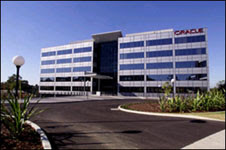I'm going to start with an analogy. You walk into a car dealership and talk to the sales person about your requirements for transport. You talk about the need to carry 4 people, in-car entertainment, performance and economy etc. etc. etc. The salesperson shows you a picture of a brand-spanking new vehicle that looks absolutely perfect for your requirements - it is the right colour, has 4-wheels, seats and a radio and the specifications for the vehicle show the right levels of performance and economy. You negotiate on price and come to an agreement, shake hands and set a delivery date. The day arrives when you are to have your new vehicle delivered. You arrive early at the dealership and get walked through the terms of the agreement, you drink some nice coffee and eat some chocolate biscuits. The time arrives and you are shown your new vehicle......
To your surprise, in the car park, is a pile of boxes from very different manufacturers - some of which you even recognise the names of. The engine has been shipped from Germany, the doors come from Geelong, the wheels from the UK, the chassis from the USA, the radio from Japan.... The sales person explains that what you brought is the best-of-everything meeting your precise requirements. What he failed to explain during the sales process is that you needed to spend an inordinate amount of time wiring and bolting the car together and that getting the vehicle serviced once complete would require visits to multiple providers. The salesperson offers the names of several mechanics and auto-electricians that can help you put together your new vehicle - at additional cost of course.
What do you end up with....?

As casual as this seems - this happens every-day around the world with ECM solutions. You think you know what you are getting from the vendor but more-often-than-not - you actually get something different. The document management solution doesn't talk to the WCM solution. Records policies cannot be applied to collaborative content. The WIKI and BLOG environment is separate and based upon unsupported open-source code. The user-interface looks clunky and the solution delivers not one, but many silos of information that you need to manage.
Your organisation doesn't need this, if it happens you will end-up spending more money that you ever imagined and the promise of an enterprise content management environment may never materialise! Your users will face an interface that doesn't provide any value and impacts their ability to perform their role on a daily basis. Of course, the inverse of this is a nice-looking interface that sits on top of a messy back-end that just causes headaches for the IT department to manage.
What you need is a nice-looking, functional user-interface based upon a complete, integrated and open-standards based back-end that provides the ECM capability that your organisation needs. This is simple, surely?
The perfect ECM architecture, I'll introduce you to that in the next article!
Paul


No comments:
Post a Comment